We all know that it’s better to mow the grass when it’s dry, but if it’s been raining for weeks and your garden is starting to look beyond overgrown, you might have no choice but to get the mower out while the grass is still damp.
In this guide, I’ve shared the step-by-step process of how to mow wet grass as safely and efficiently as possible, and shared my top tips for mowing wet grass.
✅ Key Takeaways:
You should avoid mowing wet grass whenever possible, but there are ways to safely and practically mow your lawn in damp conditions.
To mow wet grass, take the necessary steps to prepare your mower for mowing in wet conditions, and mow your lawn slowly, overlapping your previous lap by half.
Our top tips for mowing wet grass are to empty the grass clippings more often to reduce the mower’s weight, reduce your speed to minimize load on the mower, never mow in the rain, and hose down the mower after use.
Table of Contents
🌧 How To Mow Wet Grass: Overview
The best way to mow wet grass is to make preparations in advance for mowing in wet conditions, including sharpening your mower’s blades and applying lubricant to the underside of the mower deck, and raising the mower deck to reduce clogging of the blades.
During the mowing process, move slowly to account for the fact that your mower blades will need to work harder to cut grass, and overlap your previous lap halfway so that your mower only has to cut half the volume of grass that they usually would.
🤔 Should you Mow Wet Grass?
Ideally, you shouldn’t mow wet grass because of the increased likelihood of wet grass clumps being left on your lawn and clogging your mower, and messy wheel ruts from pushing your mower along moist soil. Mowing wet grass with an electric mower is also a safety hazard and increases the risk of electrocution.
However, if you do need to mow wet grass for the sake of keeping your lawn tidy during a long spell of wet weather, you can do it, and the occasional mowing of a wet lawn shouldn’t cause any long-lasting damage.
The exception here is if you have an electric lawn mower. You should never use an electric mower for mowing a wet lawn because exposing water to electricity poses a serious electrocution risk.
- Brand: Hyundai
Price: ££
Power source: Petrol
Cutting width: 43cm
Cut height range: 25-75mm
Weight: 28 kilograms
Grass box capacity: 45 litres
Dimensions (DxWxH): 53.2cm x 19.3cm x 41.3cm
Engine power: 139cc
📝 How To Mow Wet Grass Step-By-Step
Follow these 4 easy steps to cut grass that’s damp with dew or rain:
🛠 Step 1: Prepare Your Mower
To prepare your mower for coming into contact with damp grass clippings, I recommend doing the following:
Sharpen your mower blade – A sharp blade will give a cleaner and more consistent cut, which is essential for cutting grass that’s wet.
Spray lubricant underneath the mower deck – This will reduce the amount of wet grass that sticks to the mower’s undercarriage.
Raise your mower cutting height – The best mowing height for wet grass is 7-10cm, which is likely higher than your normal mowing height. This will reduce clogging of grass and soil underneath the mower.
🧹 Step 2: Prepare Your Lawn
The next step is to prepare your lawn for mowing.
You won’t be able to get rid of the water entirely before you mow, but try to hold off mowing until at least late morning, when most of the morning dew should have evaporated.
If you’re mowing on the back of a rainy week, drag your garden hose across your lawn to squeegee the worst of the water droplets from the grass before you get started.
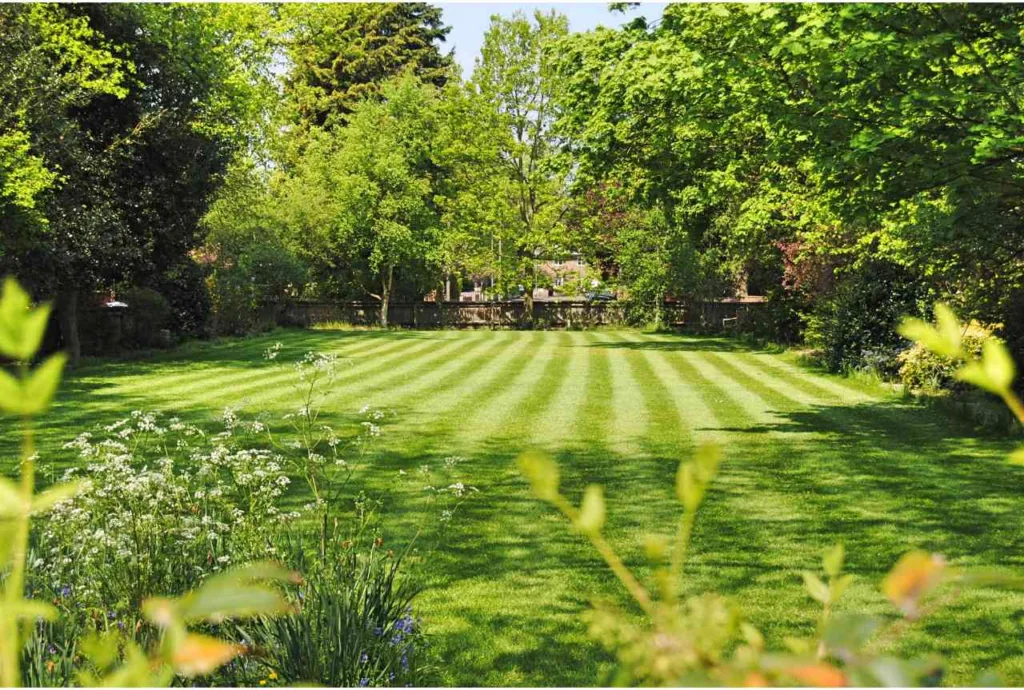
🏁 Step 3: Mow Slowly & Strategically
Now you’re ready to mow your lawn. There are a couple of mowing methods that I recommend specifically for wet grass:
Mow at half your usual pace. Even sharp blades will struggle to mow damp grass efficiently, so walk at half your usual pace to give your mower enough time to cut through your lawn.
Overlap your previous laps by 50%. Mow as you usually would, starting with the perimeter edge of the lawn first, then “filling in” the rest of the lawn with back-and-forth laps. Overlap each of your previous laps by 50%, so the mower only has to cut half the usual load with each lap.
Consider mulching. If your mower has a mulching or side discharge function, consider using it when mowing a wet lawn. Your mower will struggle to suck wet grass into the collection box or bag, and it’s often quicker and easier to rake up the grass clippings from your lawn after mowing.
🚿 Step 4: Rinse Down Your Mower
Once you’ve finished mowing, avoid putting any heavy objects back onto your lawn until the soil has had a chance to dry.
Rest the mower on its side and wash it down with a hose, then empty and clean the mower bag to get rid of the clumps of grass.
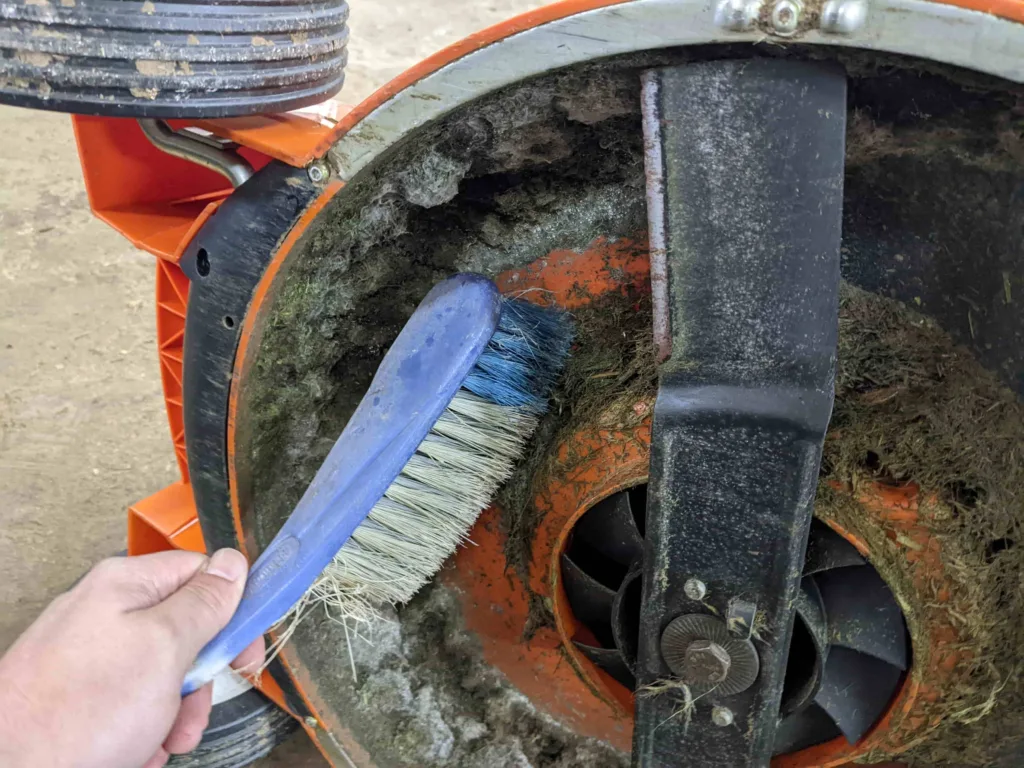
🤷♂️ How Is Mowing Wet Grass Different From Mowing Dry Grass?
The main difference between mowing in wet conditions and mowing in dry conditions is that when you mow grass that’s wet, the soil is saturated with water and the grass is heavy with moisture, which means your mower is more likely to leave wheel ruts in the ground and wet grass clippings are more likely to clump in your mower blades compared to dry grass mowing.
Mowing a dry lawn is quicker and easier because the soil is hard and firm, so your mower wheels can roll easily over the surface. Plus, the grass blades are dry and don’t stick to surfaces, so they can be quickly sucked into the grass bag or distributed evenly over your lawn.
📍 Top 7 Tips For Mowing Wet Grass
Here, I’ve shared my top 7 tips for mowing a wet lawn.
🧽 Squeegee Your Grass With A Hose Pipe
A great way to quickly reduce the water content in your grass blades is to make a homemade squeegee with your garden hose.
Drag your hose pipe across your grass, which will knock water down into the soil or drag it off the grass surface along with the hose.
This should make it easier to cut the grass blades, and they’ll dry more quickly without the heavy drops of water or dew.
📦 Empty The Grass Box More Often
Your mower will get heavy faster when you’re mowing grass that’s wet.
The extra water weight in the grass box will make it more difficult to mow, so I recommend emptying the grass clippings more frequently than normal to reduce the mower’s weight.
This will also prevent your mower’s extra weight from leaving deeper wheel ruts in your lawn.
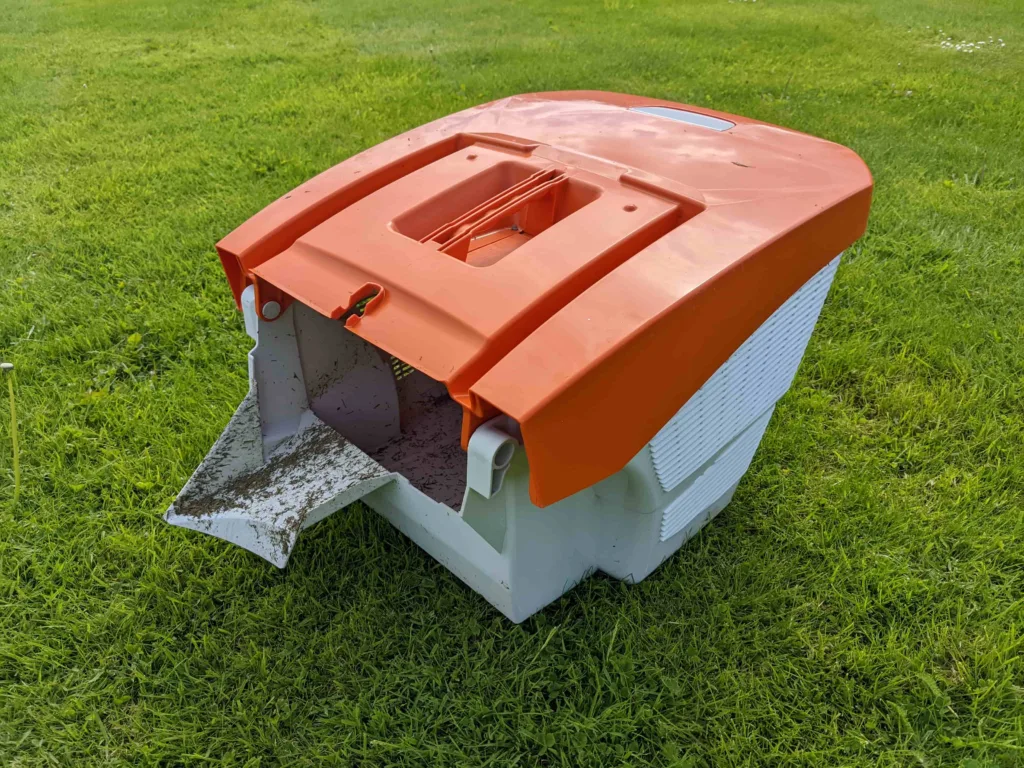
🏎 Reduce Your Speed
It’s easier to mow dry grass than wet grass, so reduce your speed when you’re mowing a wet lawn.
This will give your mower blades enough time to cut the wet grass and minimize the load on the mower.
⛈ Don’t Mow When It’s Raining
Even if you have to mow the grass while it’s wet, you shouldn’t mow when it’s raining.
Rain on the ground is one thing, and rain falling from the sky is another. Mowing while it’s raining could permanently damage your mower engine, so stay under cover until the rain lets off to at least a drizzle.
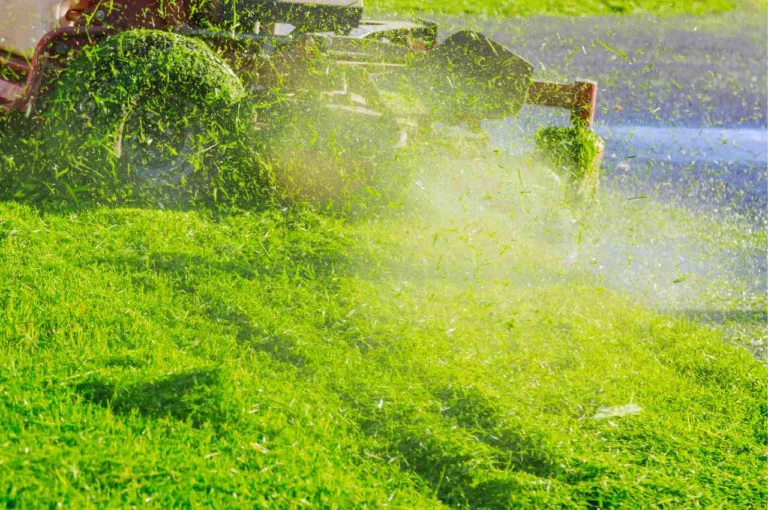
🚿 Hose Down The Mower After Use
Your mower deck will get a lot dirtier from mowing a wet, muddy lawn, so make time to hose down the mower and remove the clumps of wet clippings and dirt from the blades before you put your mower into storage.
Cleaning your mower after cutting wet grass will ensure that it’s ready to go in its next use and reduces the spread of grass diseases.
🏋🏻♂️ Avoid Using A Heavy Mower Or A Roller Mower
If you have the luxury of choice, ditch your heavy mower or roller mower in favor of a lightweight mower that will do the least damage when used on moist, water-saturated soil.
Heavy mowers are likely to leave deep wheel ruts in wet soil, and mowers with a roller will leave skid marks at either end of your garden. Now is not the time to aim for stripes – just focus on cutting your grass with as little damage as possible.
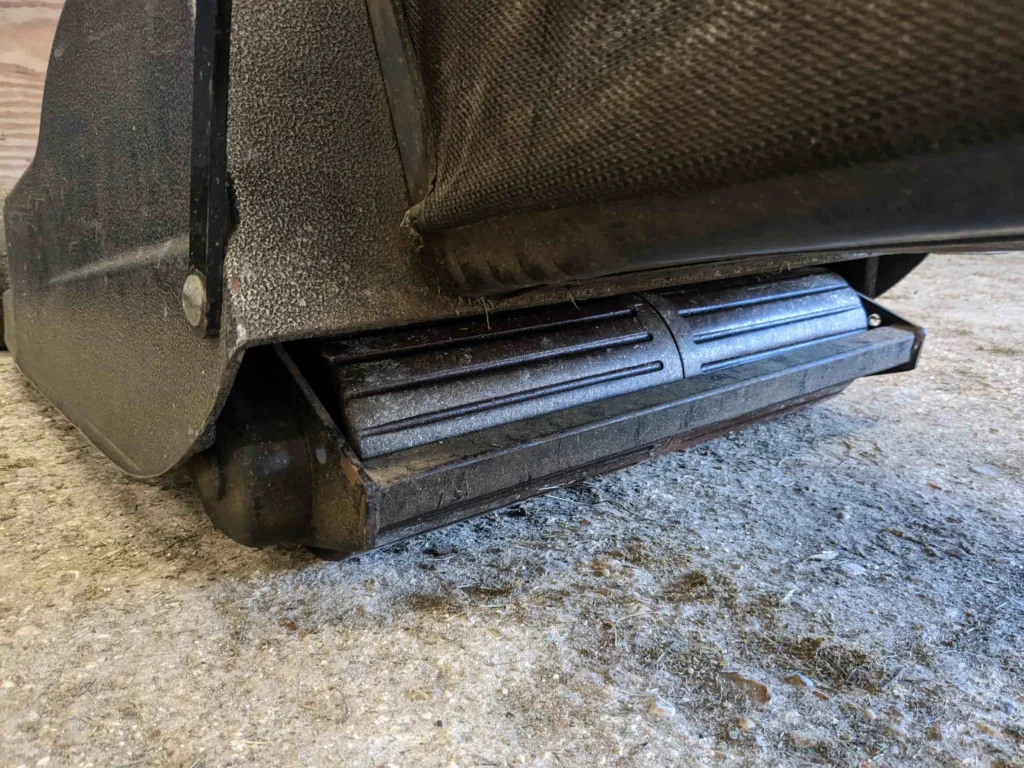
⚡️ Never Use An Electric Mower on A Wet Lawn
Our final word of advice is to never cut your lawn with an electric mower.
Regardless of the mower type (rotary mower vs cylinder mower, etc.), an electric mower shouldn’t be used on a wet surface.
Water and electricity don’t mix. Your user manual likely tells you not to use your electric mower to cut wet grass because of the risk of electrocution.
📩 Final Word
If you can help it, I recommend waiting for the wet weather to move on before you get your mower out. But if the clouds haven’t cleared for weeks, cutting wet grass might be your only option.
As long as you follow the steps in this guide and keep my wet grass mowing tips in mind, you should be able to safely mow your lawn without affecting the grass quality or tarnishing your garden’s appearance.
If in doubt, wait it out. Mowing long grass once the rain has passed is often easier than attempting to mow mid-length grass in soggy conditions.


